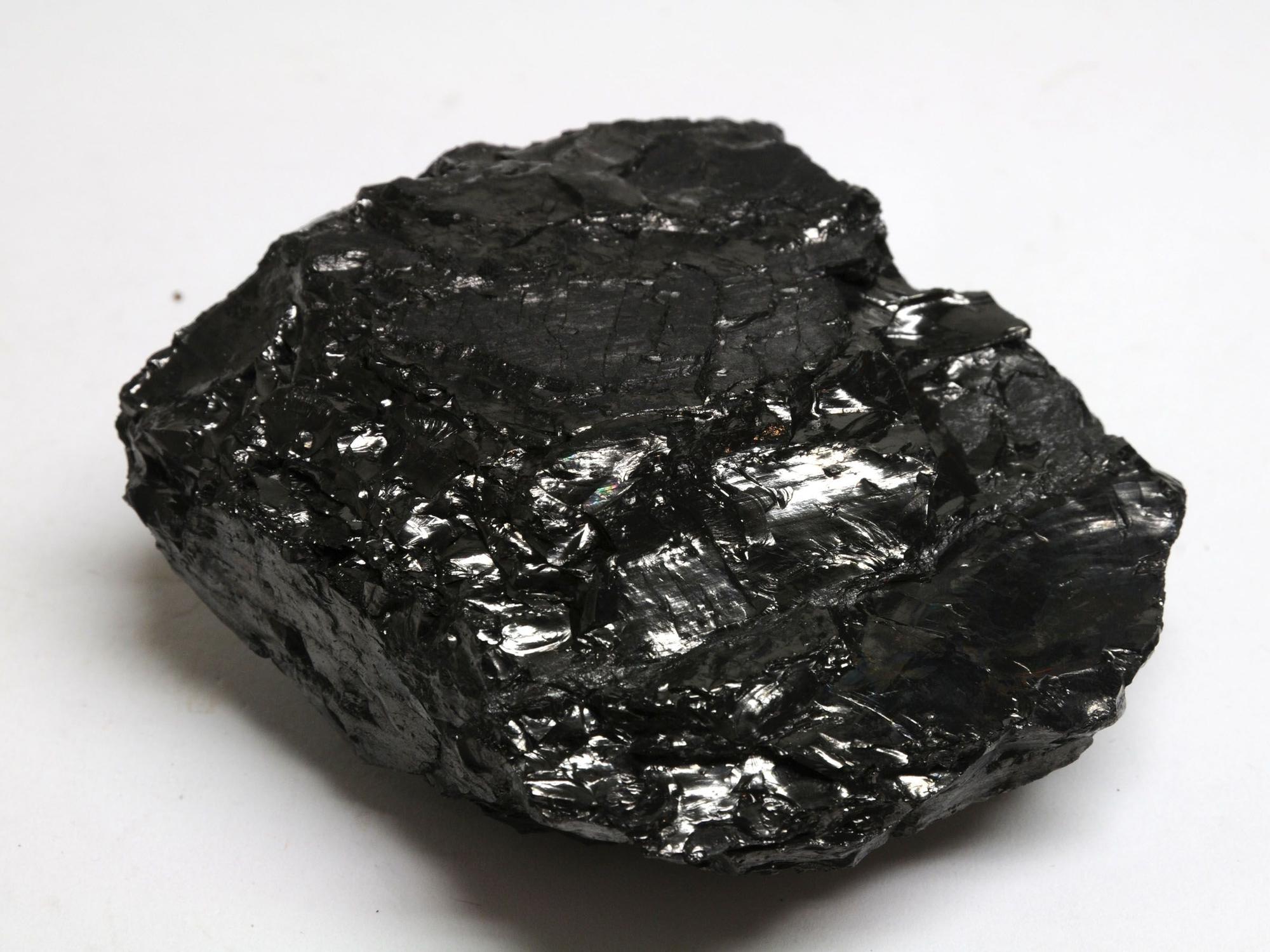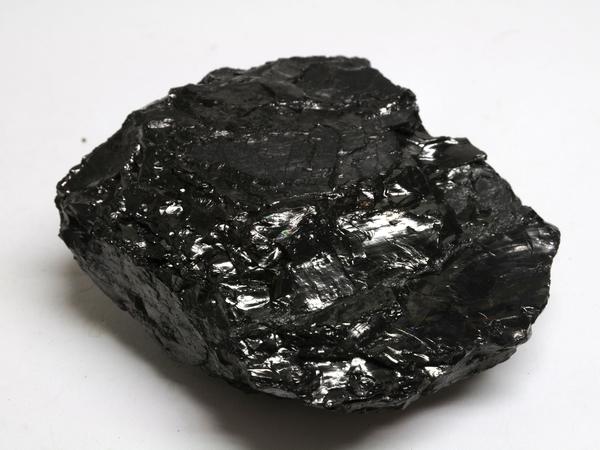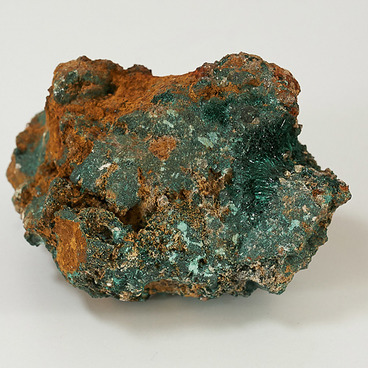The sample was found in the vicinity of the town of Mezhdurechensk in the Kemerovo region. It originates from the Tom-Usinsk field of anthracite coal, discovered in 1919 by a group of geologists under the leadership of Academician Yavorsky. Massive layers of the Carboniferous–Permian Coal-Bearing Strata lie there.
Tom-Usinsk anthracite coals were formed as a result of a unique combination of geological conditions in the late Permian period. Volcanic magma penetrated the rock strata and spread in layers, making its way between formations of coal in all directions. The high-temperature melt converted meager coal into anthracite and semi-anthracite.
Anthracite is the most ancient kind of fossil coals and the most valued one. It is virtually devoid of any impurities and is used as a source of pure carbon. It ignites with difficulty, produces a weak flame without smoke, releasing the maximum amount of heat. This type of coal is not baking.
Besides, anthracite is extraordinarily beautiful. Its iridescent glossy surface is inextricably associated with the image of a miner-worker. The color is purely black, although there are samples with gray, steel, and sometimes even with a golden or red hue. It has a dense structure with graphite inclusions. It has a concoidea and uneven fracture.
Mineralogists tend to consider anthracite to be a transitional mineral between coal and graphite. Such a property as high electrical conductivity makes it really similar to graphite.
Let us follow the whole path of transformation of the fossil vegetation into anthracite. The dead ancient organics, which had accumulated carbon during photosynthesis, decomposed in swamps for a long time. It stayed under water without access of air and gradually turned into peat and then into brown coal.
With depth, the layers were subjected to increasing pressure and heat that altered the physical properties and molecular structure of brown coal, transforming it into hard coal. The mineral reached the final maturity after passing through the highest stage of metamorphism — it went several kilometers down into the Earth’s interior, where it was exposed to high temperatures, which resulted in degassing and dehydration.
The complete cycle of transformation of prehistoric plants into anthracite took about 40 million years. It is noteworthy that the peat is compressed five-fold from its original thickness before it becomes brown coal. The mineral in the form of hard coal is still twice that thin. In general, the peat turned into anthracite gets 13-14 times “thinner”.
As a result of tectonic activity, the deep deposits of anthracite rise to the surface and become available for development. That is why mining is carried out in regions that experienced significant vertical advances of the earth’s crust in the past.
Anthracite reserves account for only 1% of the world’s coal reserves. Despite forecasts promising a rapid decline in demand, miners continue to deliver this high-quality fuel to customers. In metallurgy anthracite is used as a source of carbon for steel alloys, chemists use it as a sorbent. It is also used to produce electrodes and artificial corundum.
Tom-Usinsk anthracite coals were formed as a result of a unique combination of geological conditions in the late Permian period. Volcanic magma penetrated the rock strata and spread in layers, making its way between formations of coal in all directions. The high-temperature melt converted meager coal into anthracite and semi-anthracite.
Anthracite is the most ancient kind of fossil coals and the most valued one. It is virtually devoid of any impurities and is used as a source of pure carbon. It ignites with difficulty, produces a weak flame without smoke, releasing the maximum amount of heat. This type of coal is not baking.
Besides, anthracite is extraordinarily beautiful. Its iridescent glossy surface is inextricably associated with the image of a miner-worker. The color is purely black, although there are samples with gray, steel, and sometimes even with a golden or red hue. It has a dense structure with graphite inclusions. It has a concoidea and uneven fracture.
Mineralogists tend to consider anthracite to be a transitional mineral between coal and graphite. Such a property as high electrical conductivity makes it really similar to graphite.
Let us follow the whole path of transformation of the fossil vegetation into anthracite. The dead ancient organics, which had accumulated carbon during photosynthesis, decomposed in swamps for a long time. It stayed under water without access of air and gradually turned into peat and then into brown coal.
With depth, the layers were subjected to increasing pressure and heat that altered the physical properties and molecular structure of brown coal, transforming it into hard coal. The mineral reached the final maturity after passing through the highest stage of metamorphism — it went several kilometers down into the Earth’s interior, where it was exposed to high temperatures, which resulted in degassing and dehydration.
The complete cycle of transformation of prehistoric plants into anthracite took about 40 million years. It is noteworthy that the peat is compressed five-fold from its original thickness before it becomes brown coal. The mineral in the form of hard coal is still twice that thin. In general, the peat turned into anthracite gets 13-14 times “thinner”.
As a result of tectonic activity, the deep deposits of anthracite rise to the surface and become available for development. That is why mining is carried out in regions that experienced significant vertical advances of the earth’s crust in the past.
Anthracite reserves account for only 1% of the world’s coal reserves. Despite forecasts promising a rapid decline in demand, miners continue to deliver this high-quality fuel to customers. In metallurgy anthracite is used as a source of carbon for steel alloys, chemists use it as a sorbent. It is also used to produce electrodes and artificial corundum.



